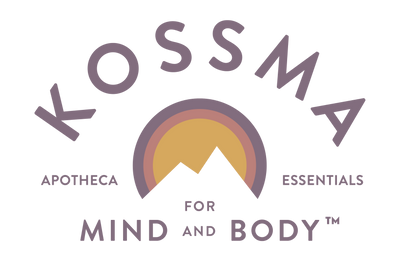

Our Processes & Techniques
With over 20 years of experience in researching and working with natural ingredients, we have perfected our diverse processes and techniques employed by our trusted partners of US farms, ranches, distillers, and domestic botanical suppliers.
Method: Distillation
EXTRACTION
Distillation is a process used to separate and purify liquids. It works by heating plant matter in a still, which turns it into vapor. The vapor is then cooled and condensed back into a liquid. The condensed liquid is called the distillate.
Method: Cold Pressing
EXTRACTION
We favor cold pressing as our method for extracting PUFA-aware oils from fruit pulp and selected seeds used in our products. This technique retains nutrients and prevents oxidation, as it involves grinding and pressing raw materials without using heat. While tallow, fruit oils, PUFA-aware oils, and animal fats are stable under heat and unaffected by oxygen, oils like rosehip, high in linoleic acid, are prone to damage due to heat and oxidation, which is why we avoid them. Our guiding principle, "PUFA-Aware Skincare™", underscores our dedication to offering skincare products with low or no PUFA content.
Method: Emulsify
FORMULATING
Emulsion is the process of blending an oil-based ingredient into a water-based ingredient to achieve a stable mixture. A classic example of an emulsion is lotion. This process involves adding small droplets of the oil-based ingredient to disperse throughout the water-based ingredient, creating a homogeneous formulation.
Method: Infusion
EXTRACTION
Infusion is a process that involves extracting flavors (in cooking), aromas (perfumery), or medicinal properties (such as for skincare products) by steeping an herb, resin or botanical in an oil, fat, water or alcohol. By steeping, the desired qualities of the herbs are absorbed into the medium resulting in an aromatic, or potent infusion. We use this process to make our inhouse extractions, using a 3 step method, infusing herbs and botanicals into any of the animal fats we use and then straining it. The infusion provides bioavailable active compounds that offers a range of benefits such as hydration, antioxidant protection, soothing benefits, or promoting collagen production.
Method: Sustainable Harvesting
PROCESSING & PRESERVATION
This is one of the most important aspects of our skincare formulations because it ensures the high-potency of our ingredients. We rely on fresh botanicals for our infusions and extractions, and have partnerships established with a variety of (mostly) US farmers who grow the plants for us. Some are wild harvested (like our poplar buds) and are harvested in a sustainable way that respects nature's bounty and paves the way for future harvests.
Method: Gelling
FORMULATING
We use this process to transform liquid textures into a gel for products like our Chamomile Cleansing Gel. The process is called gelation which combines gel-forming materials (Xanthan gum in the Chamomile Cleansing Gel example mentioned before) that are dispersed or dissolved in a liquid. The actual gelling is caused by the ingredients hydrating and swelling, cross-linking the material which cools and then sets to form a stable gel.
Method: Beekeeping
HARVESTING
Beekeeping plays a crucial role in sourcing our beeswax, and it's actually a significant aspect. Many people overlook the importance of beeswax quality, but we understand its significance. We obtain the cappings, which are the freshest and most nutrient-dense part of the wax, from a local beekeeper who harvests the cappings fresh just for us. The use of fresh, high-quality beeswax elevates our formulations.
Method: Regenerative Farming
HARVESTING
We use a variety of animal fats in our products and source them from US livestock farming families. The animals come from grass-fed organic regenerative farms, which is an important distinction. Regenerative farming practices prioritize the health of the animals and the land they graze on. By rotating the livestock and allowing natural vegetation to thrive, it creates a cascade of benefits, including the growth of native plants and the attraction of bees for pollination. Regenerative farming goes beyond organic farming by focusing on holistic land management practices that aim to restore the entire ecosystem (organic farming only focuses on avoiding synthetic inputs and chemicals) and has the potential to positively impact climate control if more farms are supported to adopt the practices.
Method: Render
PROCESS & PRESERVATION
We use a variety of animal fats in our products and source them from US livestock farming families. The animals come from grass-fed organic regenerative farms, which is an important distinction. Regenerative farming practices prioritize the health of the animals and the land they graze on. By rotating the livestock and allowing natural vegetation to thrive, it creates a cascade of benefits, including the growth of native plants and the attraction of bees for pollination. Regenerative farming goes beyond organic farming by focusing on holistic land management practices that aim to restore the entire ecosystem (organic farming only focuses on avoiding synthetic inputs and chemicals) and has the potential to positively impact climate control if more farms are supported to adopt the practices.



